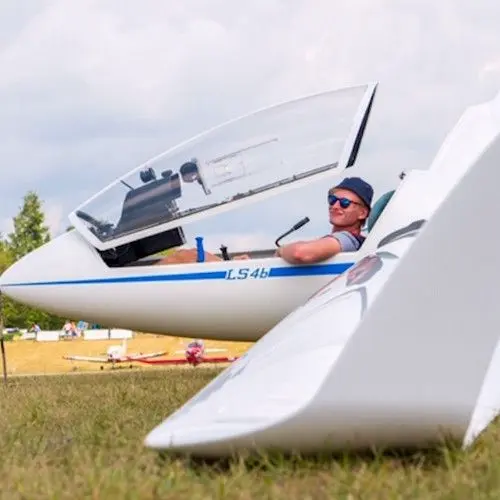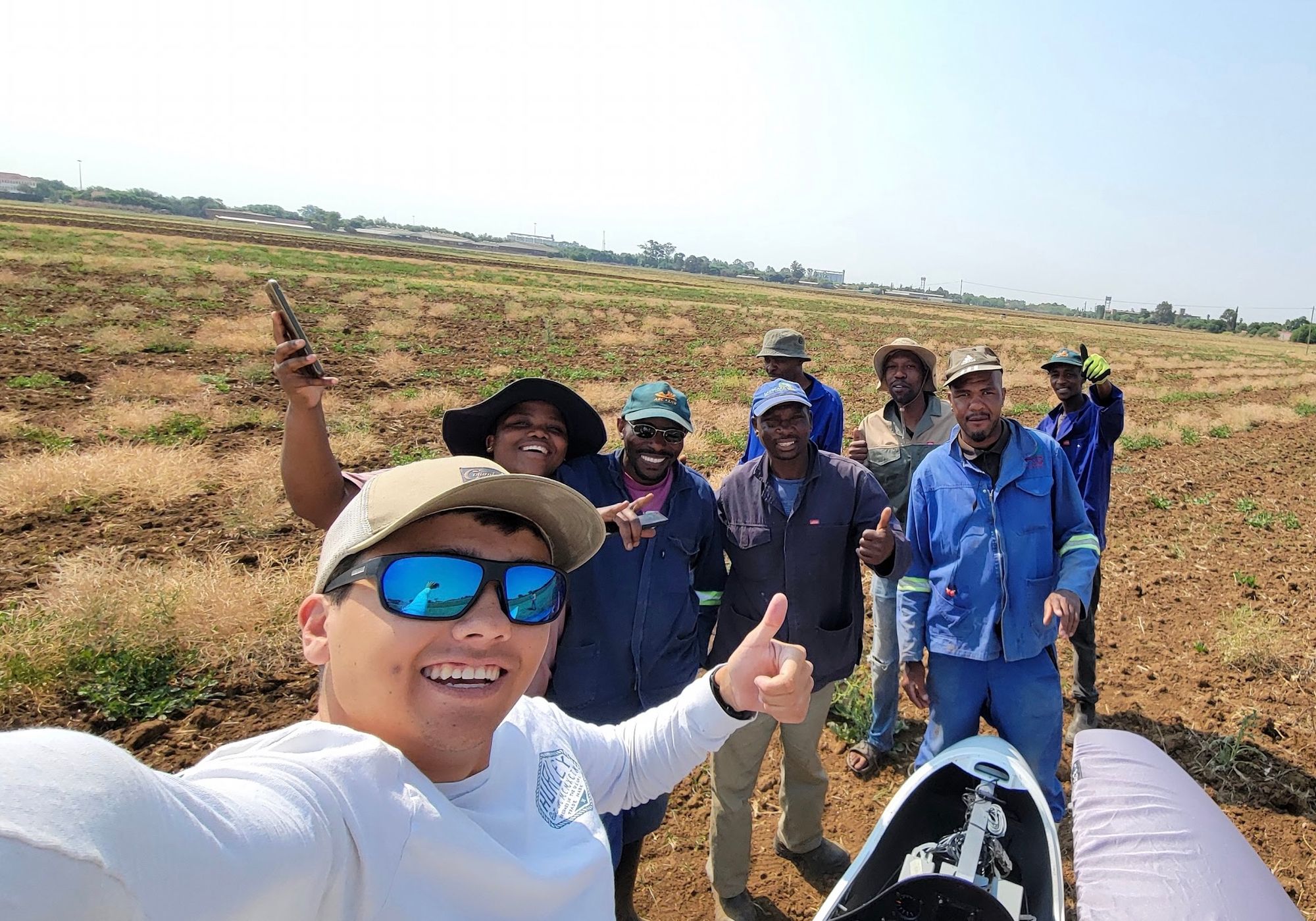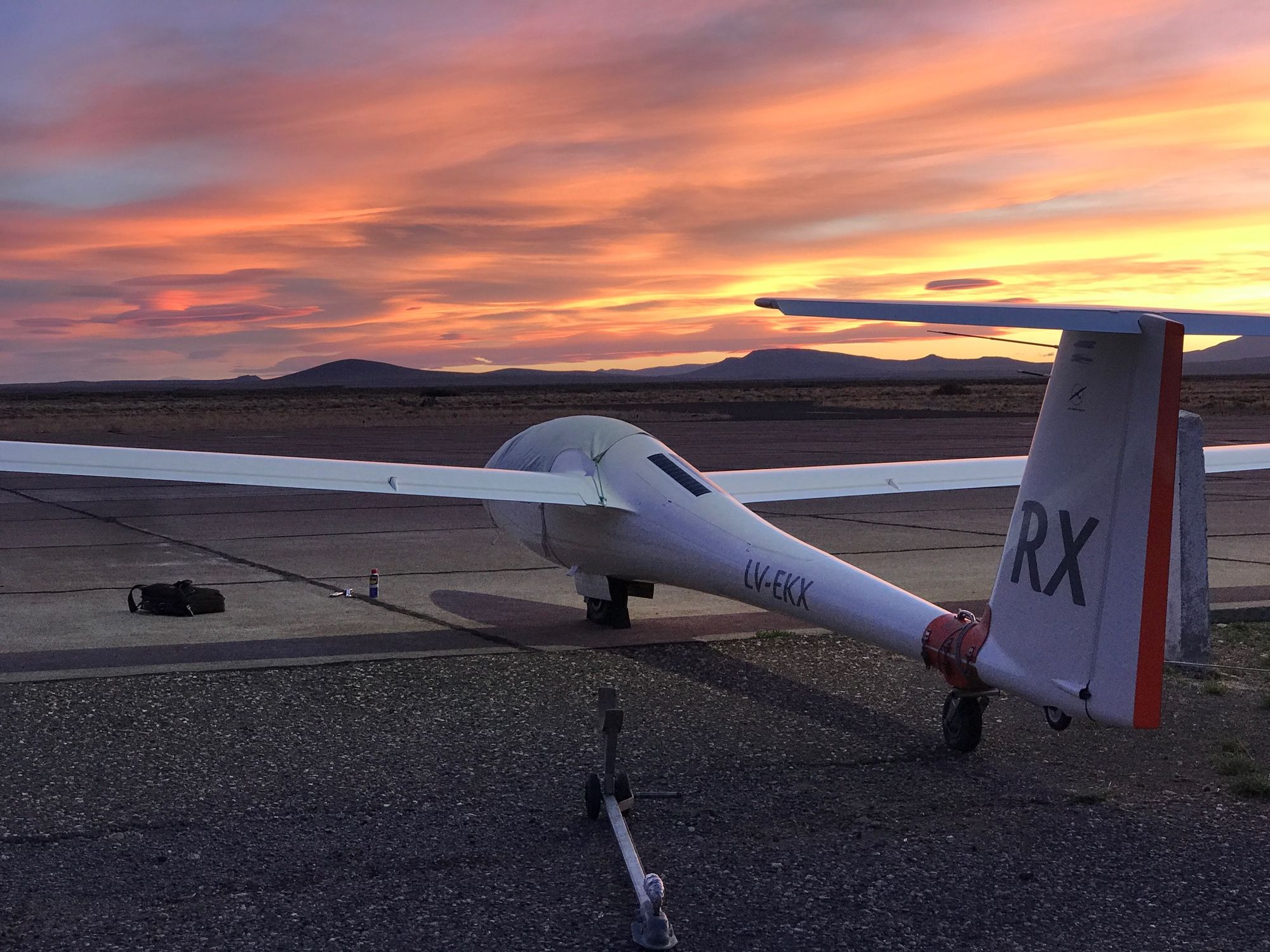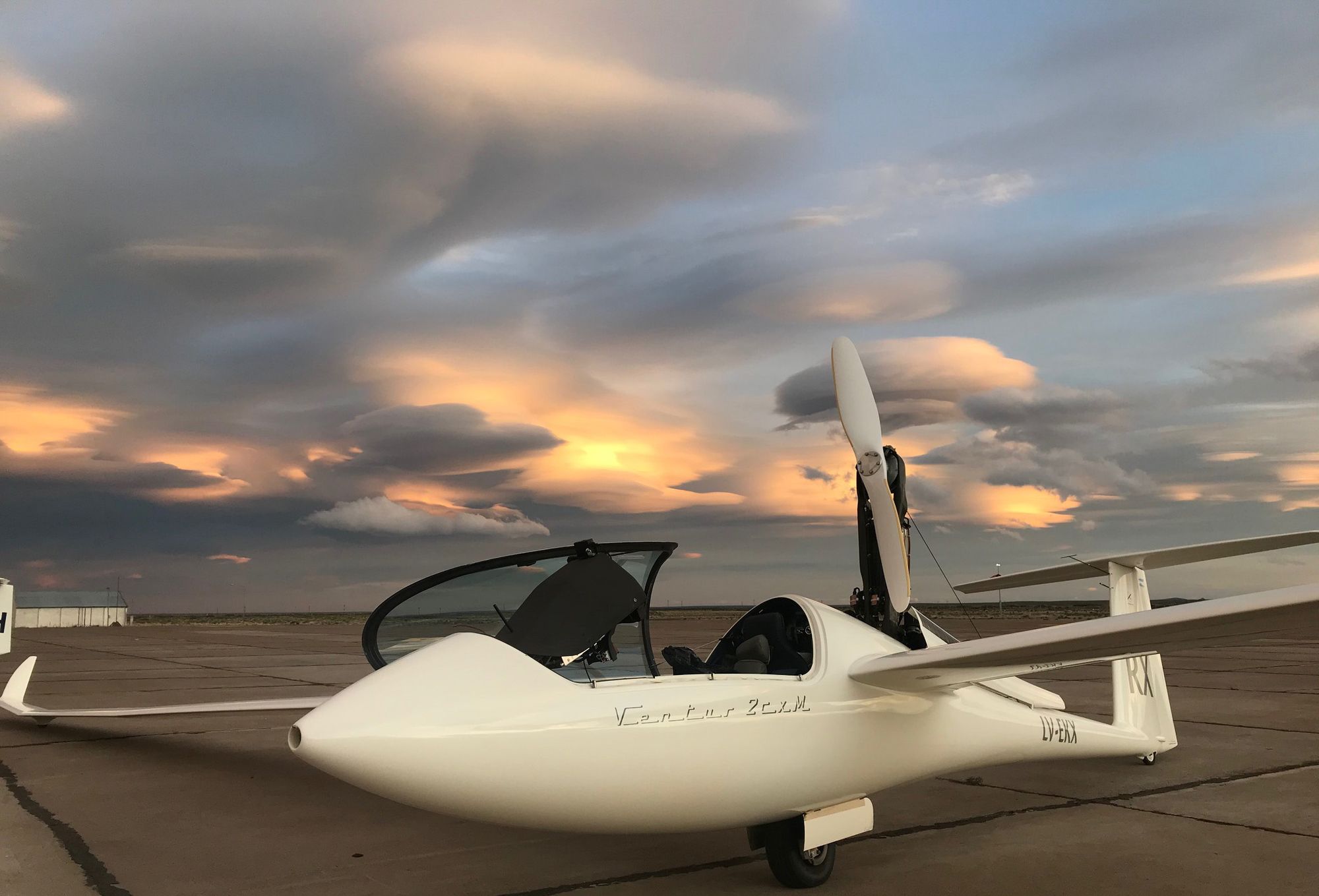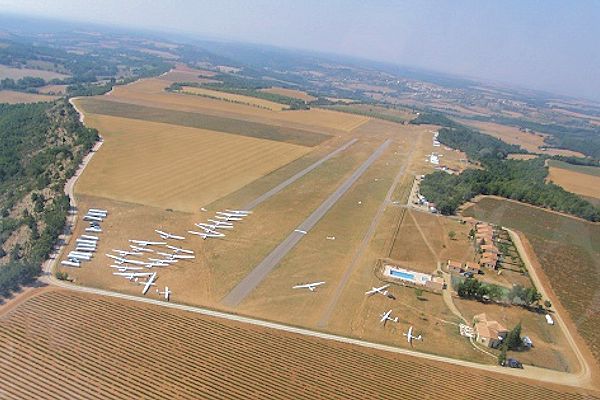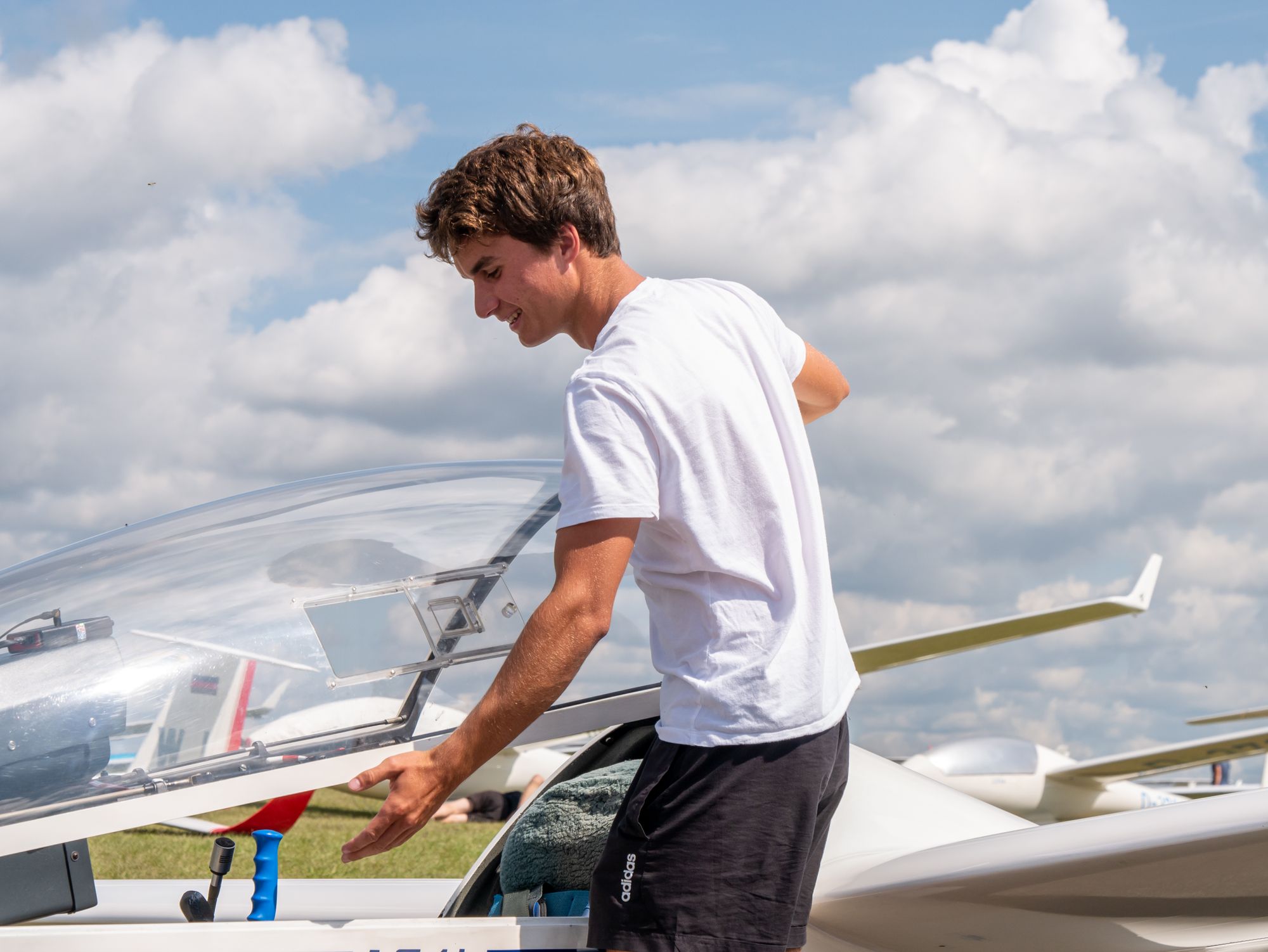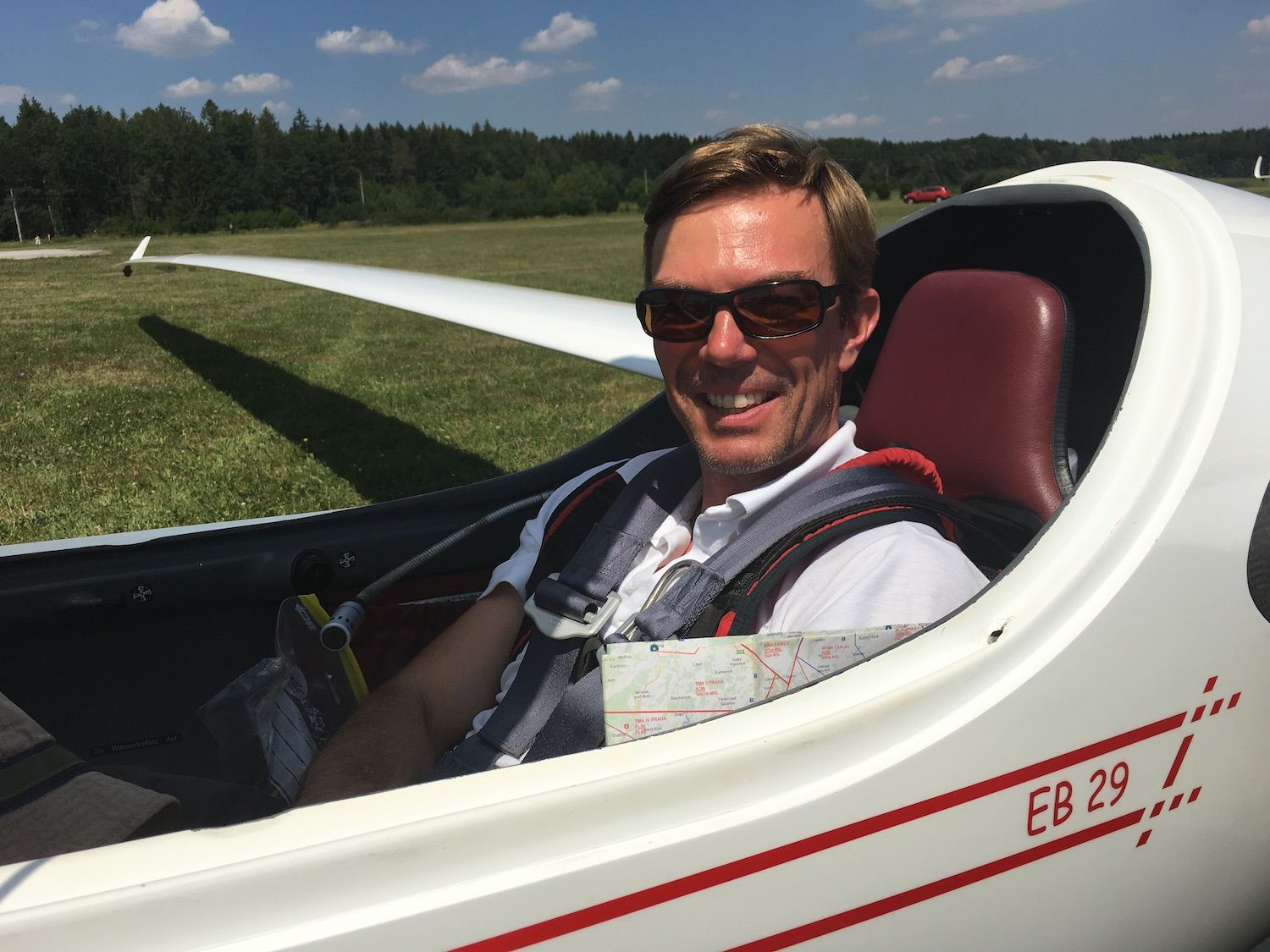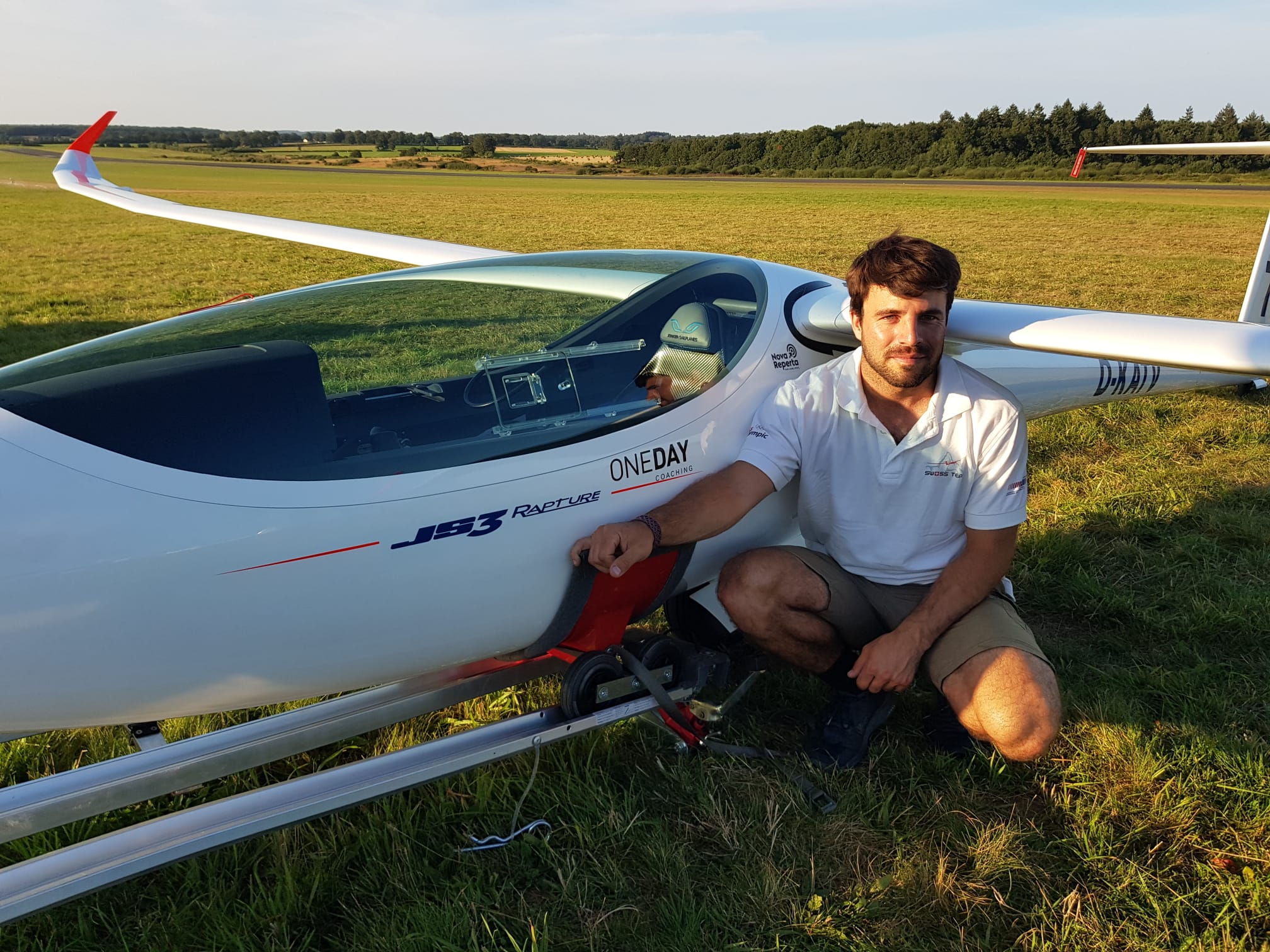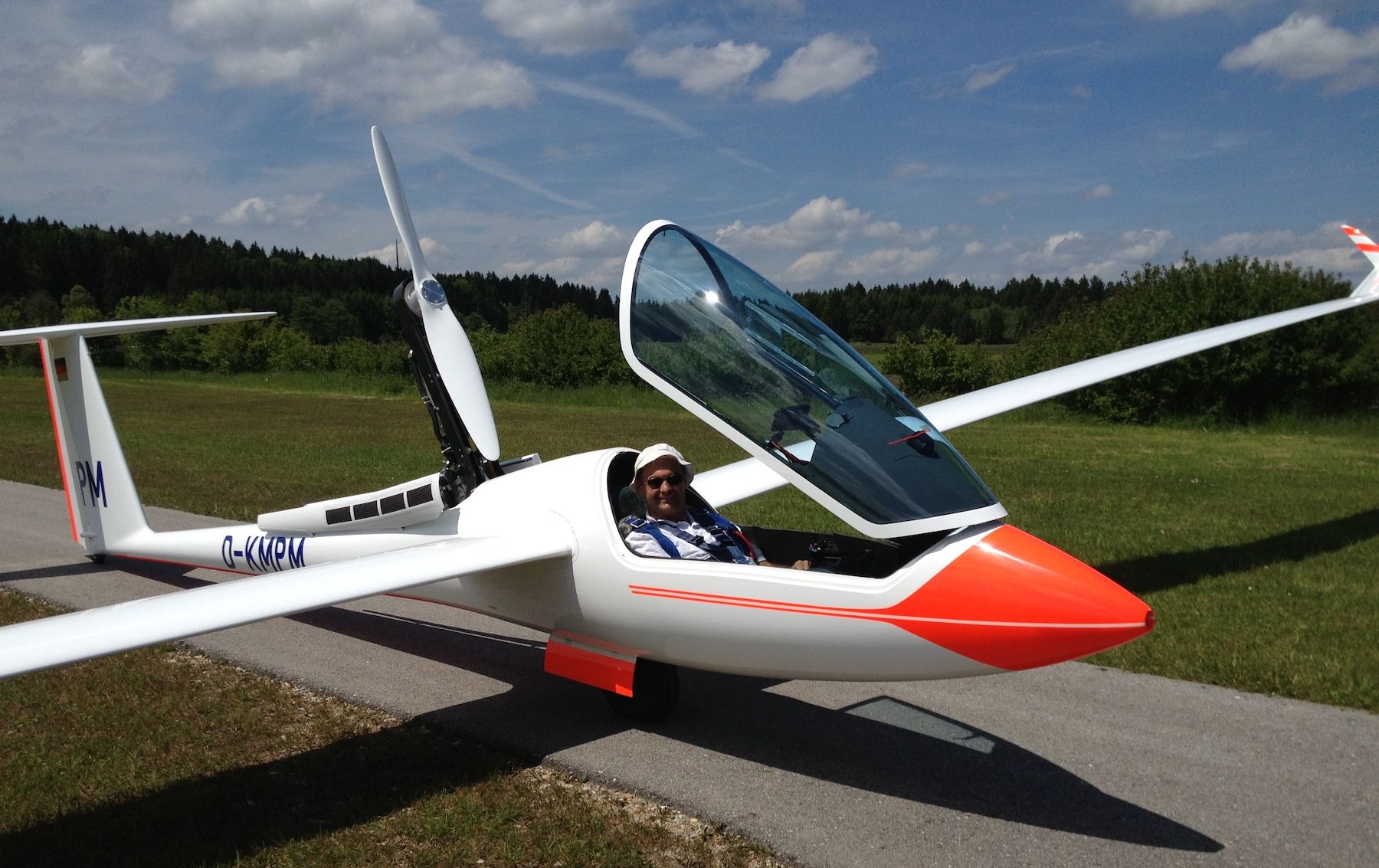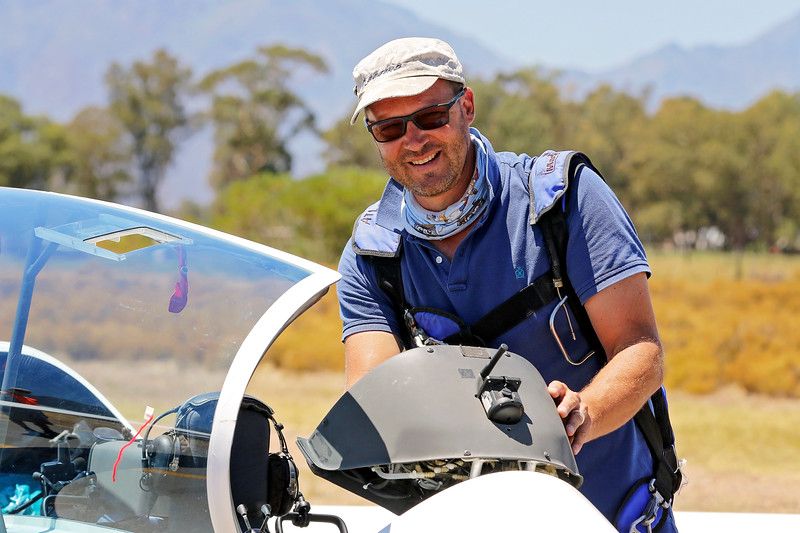Katrin Senne | Escaping the Peloton

⏳ Flight hours: 4000
✈️ Current glider: JS3 Rapture JET
😌 Glider of your dreams: JS5 Rey - Open Class
🌎 Where you want to go gliding someday: South America - Chile
Hey Katrin, where do we reach you at the moment?
In my office in Aidlingen working for Jonker Sailplanes GmbH.
You have won the Women’s international WeGlide Free, Sprint and Out&Return competition this year, congratulations. Which flight did you enjoy the most?
The most amazing flight was the 1182 km flight in Worcester on the 23rd of December with an average of 153 kph. It was one of the best days ever in Worcester. Amazing ridge conditions all along the Cederberge to the northwest and flying over the ocean at Gordons Bay near Capetown. It was my first flight ever from Worcester and the conditions were incredible. Only 2% of the flight were spent in thermals.
What made you want to fly down there?
Worcester is known for its excellent ridge soaring conditions with a beautiful, breathtaking landscape. I have never experienced similar conditions flying anywhere else so far. Flying only on the ridges without using thermals at all. Laurens Goudriaan has been telling me about these fantastic conditions for many years. In 2020 I decided to fly the South African nationals at Welcom and afterwards I finally made it to Worcester.
The area around Stellenbosh with the green vineyards is beautifully set into green and brownish painted hills and you can spot the occasional vine farms with their white shining houses. Towards the east, on the Indian Ocean side, you'll find an east-west stretched mountain range up to 2000m elevation with green vegetation. Towards the Cederberge in the north of Worcester, the landscape is very rough and rocky, almost moon like landscape set in a north-south direction.
Very beautiful, unique, and breathtaking. At some spots, you just want to tap the pause button to stop and just watch the scenery below you and not have to continue to fly at 230 km/h!
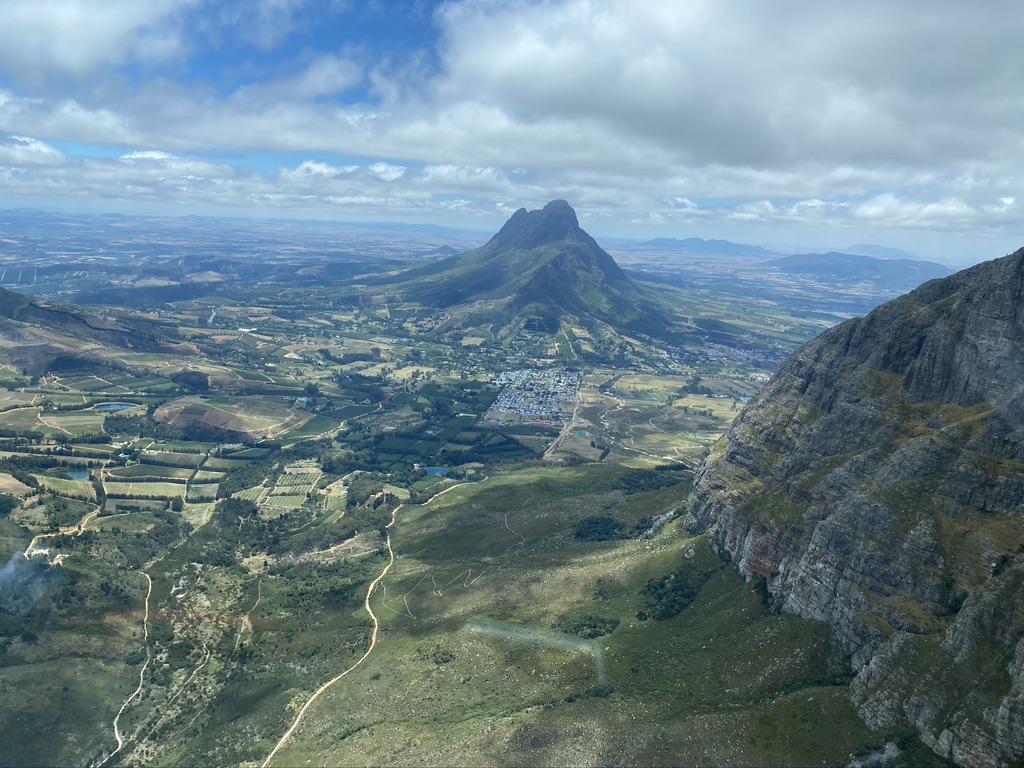
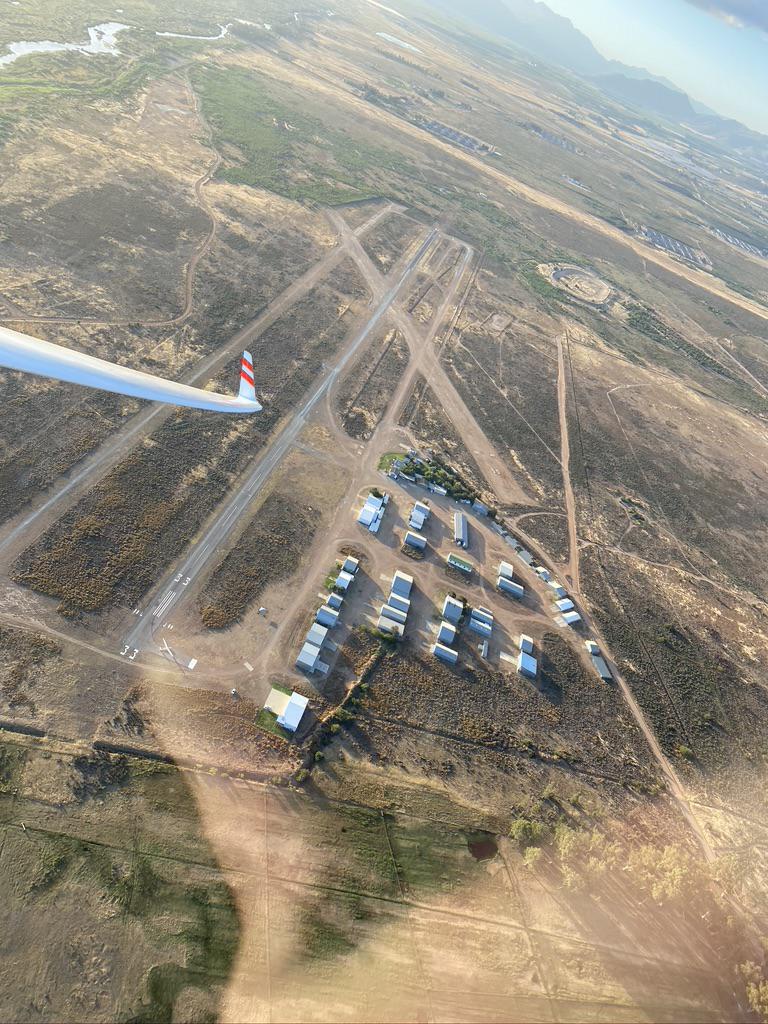
Did you need some time to adjust to the terrain and to the special kind of flying?
I got a very good briefing from Sven Olivier who knows Worcester probably best. He explained to me some tricks where you need to get high in order to jump across to the next mountain ridge and how the wind needs to be to fly a certain task. You need to get used to flying in low altitudes along the ridge in the beginning. At some parts, you are only 200m GND all the time. I am still a beginner in Worcester but definitely want to come back and experience some more flying there.
You definitely need some mountain gliding experience before you come to fly in Worcester, it can be very rough and turbulent at times.
What kind of weather situation is needed for the ridges to work well?
The prevailing wind from southerly to southeasterly directions together with the topography makes task selection along the mountain range from Worcester to George, which is situated 250km further in the east, easy. Flying northwards from Worcester with the ranges facing to the west is also possible, though. The explanation can be found in a speciality of the meteorological condition called Cape Doctor.
Cape Doctor is the local name for the strong, often persistent and dry south-easterly wind that blows on the South African coast from September to March. It is known as the Cape Doctor because of a local belief that it clears Cape Town of pollution and pestilence.
Although the wind blows over a wide area of the Western Cape Province, it can be especially strong and unpleasant around the Cape Peninsula. Capetonians also call it "the South-Easter". Once it has crossed the Cape Peninsula wind tends to turn from more to a westerly flow which allows running the ridges north of Worcester.
In Worcester, you were flying with an ASG 32. How does this glider fit your style of flying, compared to other gliders that you have flown previously?
With my father Klaus Keim, I own an ASG 32 in Germany as well. So I am used to flying this glider. Previously with my dad and now with my daughter Eva Senne. It is a very nice glider, going well in good conditions. A bit heavy in controls like all double seaters but much more pleasant to fly than the old ASH 25 we owned before. I love to fly with my daughter and teach her how to fly competitions and do big tasks. We've flown the French nationals in double-seater class this year and had a lot of fun although the weather was very bad and the glider was too heavy for the weak conditions we had.
I would always favor a single-seater though, preferably in 18m configuration. I love this class the most. I fly a JS3 Rapture with a JET sustainer and I've never flown an easier to fly glider before. It is so light in controls and the feedback on what the air is doing is immense.
Our family also still owns a Glasflügel 604 with 24m wingspan. My dad has not flown it for 24 years but during the lockdown, I have overhauled it with the help of a very good friend. And it is flying again. A very slow rolling old-timer, but fun.
Your fastest and furthest flight in Europe was along the Jura mountains. You averaged 144 km/h for 2 hours - incredible!
Yes, a 722 km out & return starting from my home base Deckenpfronn (located 25 km east of the Black Forest) flying down the Schweizer Jura until Oyonnax and back home. Actually, I wanted to do a women 500 km out & return national record that day, but the weather was looking so good, so I just cancelled the task and went straight on until the end of the Jura and back home again. The cloud streets that day were mind-blowing! One super fast street all along the Jura. Mathias Sturm was also flying with his JS3 and we have never experienced the Jura as good as on this day.
In the end, it was still a 500km record even though I flew 222km more than needed. I plan to fly all the way down to St. Auban or Puimoisson with my JS3 JET and back home next year. Mountains are special. I love it.
Even with 18m wingspan, you lost around 1000m crossing between the Black Forest and the Jura. This looked very exciting?
I wasn’t flying at best glide on that leg, always between 130 kph and 160 kph on purpose because the airspace coming up in front of you on the Jura ridge obliged you to go below. And the clouds in front were looking very promising so no need to slow down!
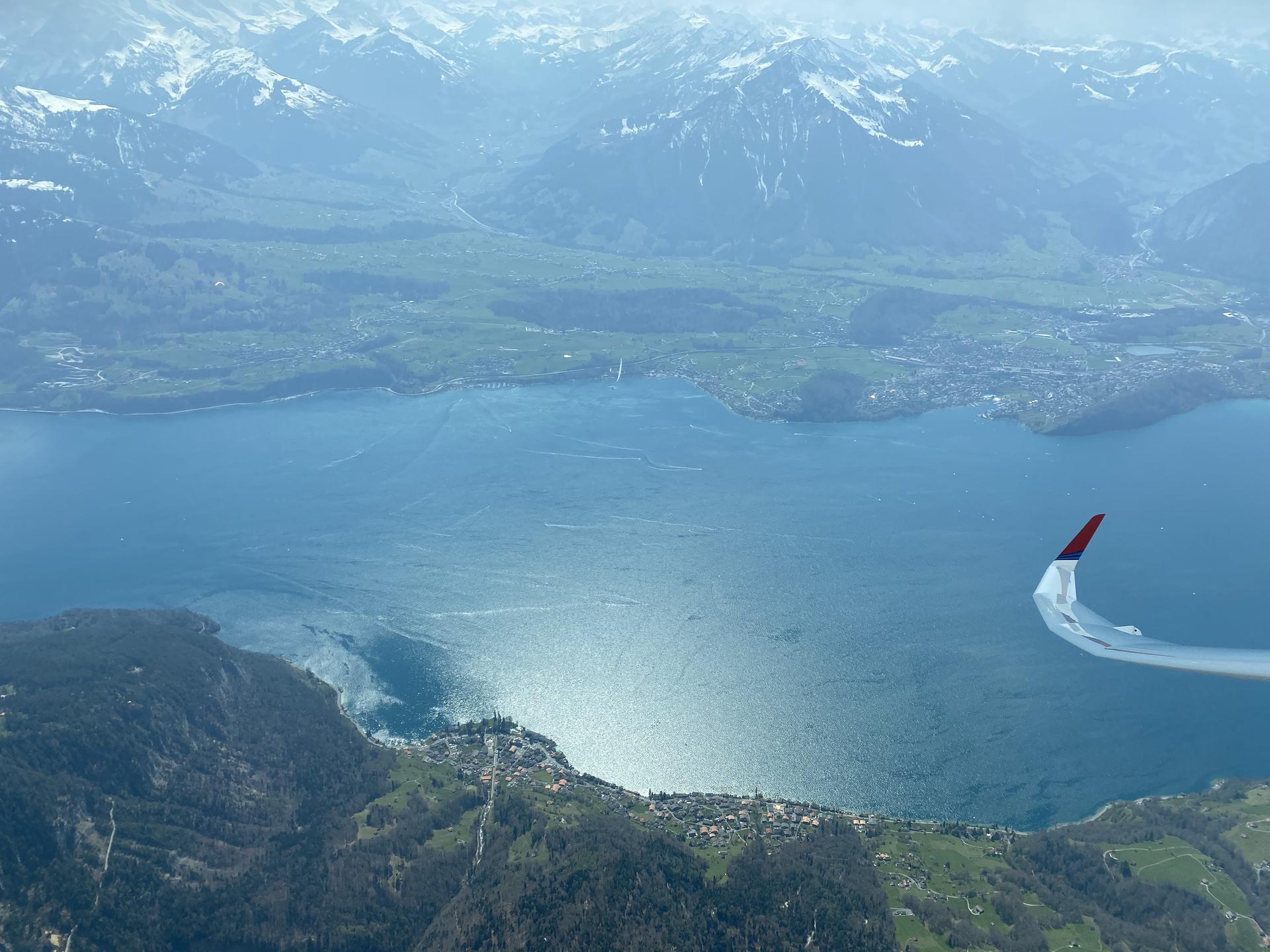
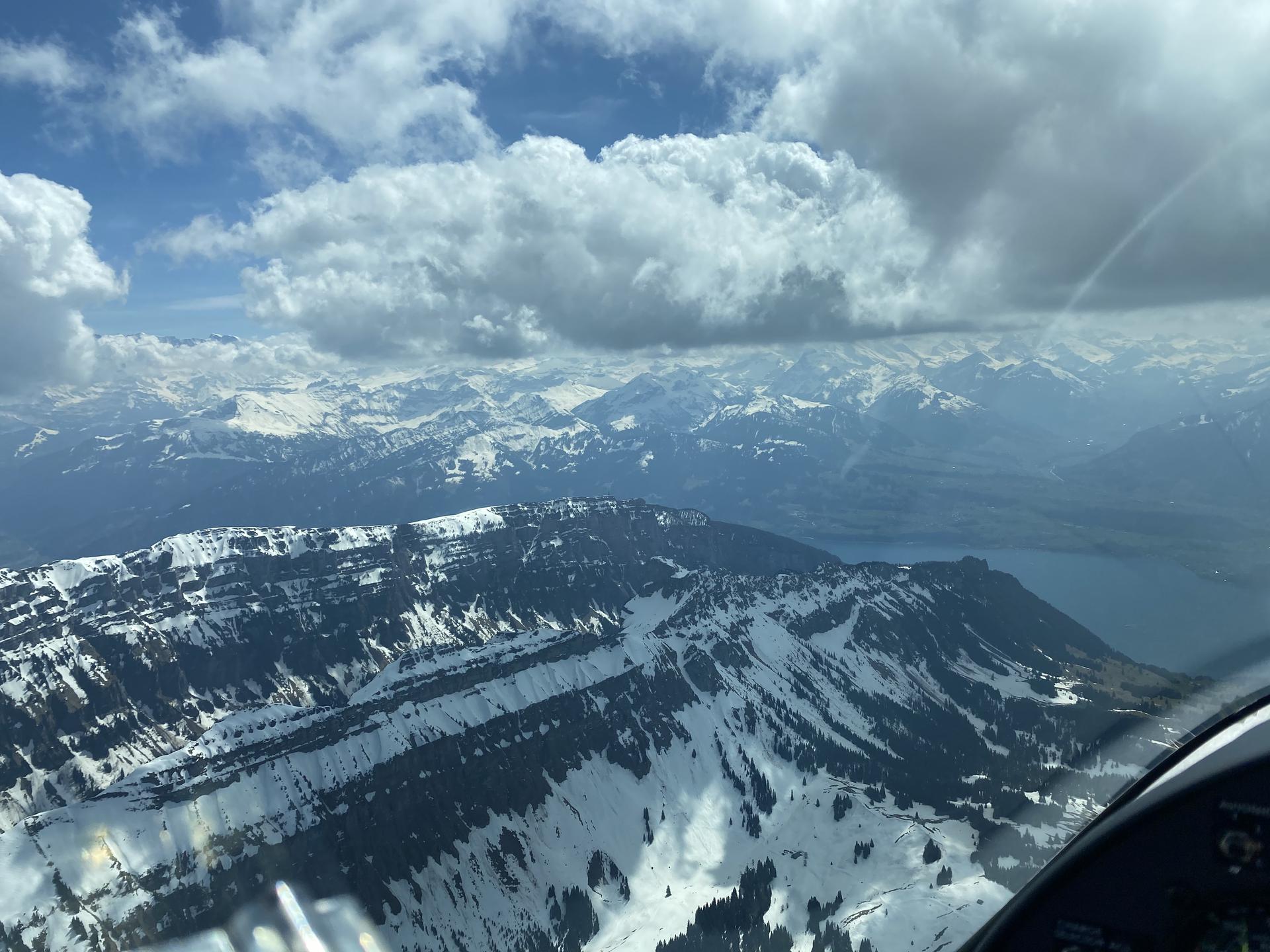
You have just returned from the Grand Prix World Final in Saint Auban. What was your impression of the competition?
It was an exciting and well-organized competition. The atmosphere was quite respectful and always fun. All 20 pilots helped each other as much as they could and the evenings were spent having dinner and talking about the flight or exchanging flying experiences all around the globe. Because only 20 pilots are competing in the SGP the contact is much more intense than at any other big competition.
Flying in the Southern Alps is maybe the most challenging flying in Europe. You have ridges, big mountains, unlandable valleys, lakes, high plateaus as geographical circumstances. You need to understand different wind systems, know the mountains, escape routes and have skills in thermal, wave and ridge flying. All together very challenging.
It was my second SGP after the qualifying SGP in Varese earlier this year where I ended in fourth place. I must admit I like the regatta start a lot. You don’t need to do tactical games at the start gate. Everybody starts running at once. I like this. It is racing from the very first minute onwards. The first two thermals are a bit crowded and you have to watch the others very carefully and pay attention. But it was always safe.
What are the things that the winning pilots did a bit better than the others?
At an SGP you have to arrive first at the finish line, the pilot who takes the last thermal best and starts the final glide first wins the day and gets the points. Only the first 10 pilots each day get points. Becoming 11th you get 0 points even if you are only 2 minutes behind the first. At normal competitions you are still a few points behind the first but not at SGP format. You have to be spot on at the last leg. There the race is won. It helps to have the best performing glider in that case.
It's like a road bike race. The peloton races and in the end an attaching pilot on the last leg will sweep all the points.
The winning pilot doesn't always try his own route, he stays with the gaggle and takes a chance when it occurs. Tactical thoughts are valuable and sometimes the better choice than taking a high risk on your own. Risk Management is a skill you need.
Sebastian Kawa won the Grand Prix with the new AS 33, closely followed by Mario in the Ventus 3 and Maximilian in a JS3. Did you notice a difference in performance between the gliders?
All three models are performance-wise very close together. They may have different handling characteristics. They all are exceptional gliders. I love my JS3 and in 18m configuration, it is very pleasant to fly even at a 60kg/m2 wing loading. It loves flying fast. At the SGP we were obliged to fly at a 48kg/m2 wing loading which was a small disadvantage for the JS3 and AS 33 with a slightly smaller wing than the Ventus 3.
In thermals, I could not see a difference between the gliders. They climb very similarly. In the glide, I had the feeling to have a small edge. On some days the French said they could not keep up with me. I don’t know why, as my JS3 is just maintained nicely and nothing special has been modified or improved. In the end it is the pilot factor that makes the big difference!
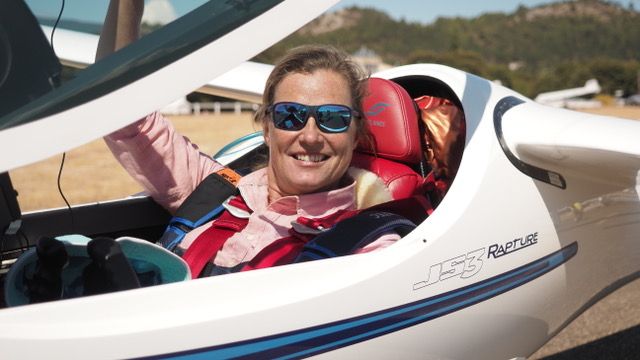
In which competitions will we see you compete next year?
The past two Covid summers without any national and international competitions I was able to explore many other gliding destinations which I would have not experienced without the lockdown. I was in Lienz, Austria, Celje, Slovenia, Varese, Italy and three times to France. Not to forget my beloved Rieti in Italy. All this because competitions were not possible in Germany. Everywhere around us in Europe, they were possible. Very strange.
I might fly the German Women Nationals in Landau, the 15m Nationals in Zwickau and the WWGC 18m in Great Britain.
In Germany, you normally fly from Deckenpfronn in the south of Germany. How is the airfield situated for big flights?
It is located 25km east of Freudenstadt, Black Forest. So normally I launch to the Black Forest and then circumnavigate Stuttgart Airspace. For really big 1000km triangles it is not ideal. Thermal activity on the Swabian Alb starts at least one hour earlier and ½ hour earlier in the Black Forest. Deckenpfronn is below the 4500 ft sector of Stuttgart. Also not ideal. Coming home in the evening from the Swabian Alb you have to make sure to stay below the 4500 ft sector.
Is there any special flight from Deckenpfronn that you would like to do someday if the weather is right?
1000km FAI triangle.
You work as a sales agent for Jonker Sailplanes and you seem to enjoy flying in double seaters. Any chance that there will be a double-seater from Jonker at some point?
I think we have to wait and see. JS has many projects in the pipeline and the main focus right now is to build the JS3 Rapture RES (Retracting Electric System) and the JS2 Revenant Self Launcher. A lot of work still needs to be done before other projects can materialize.
Thank you for the interview, Katrin! Do you want to mention anything else?
I would like to say a big thank you to the whole team of WeGlide for inventing a new, modern, inspiring, educating, fun to read, and nice to look at platform to get gliding more popular around the world. I hope it will help to increase the number of gliding pilots worldwide a bit and show how nice, colourful and fascinating our gliding sport can be. Keep it up!
